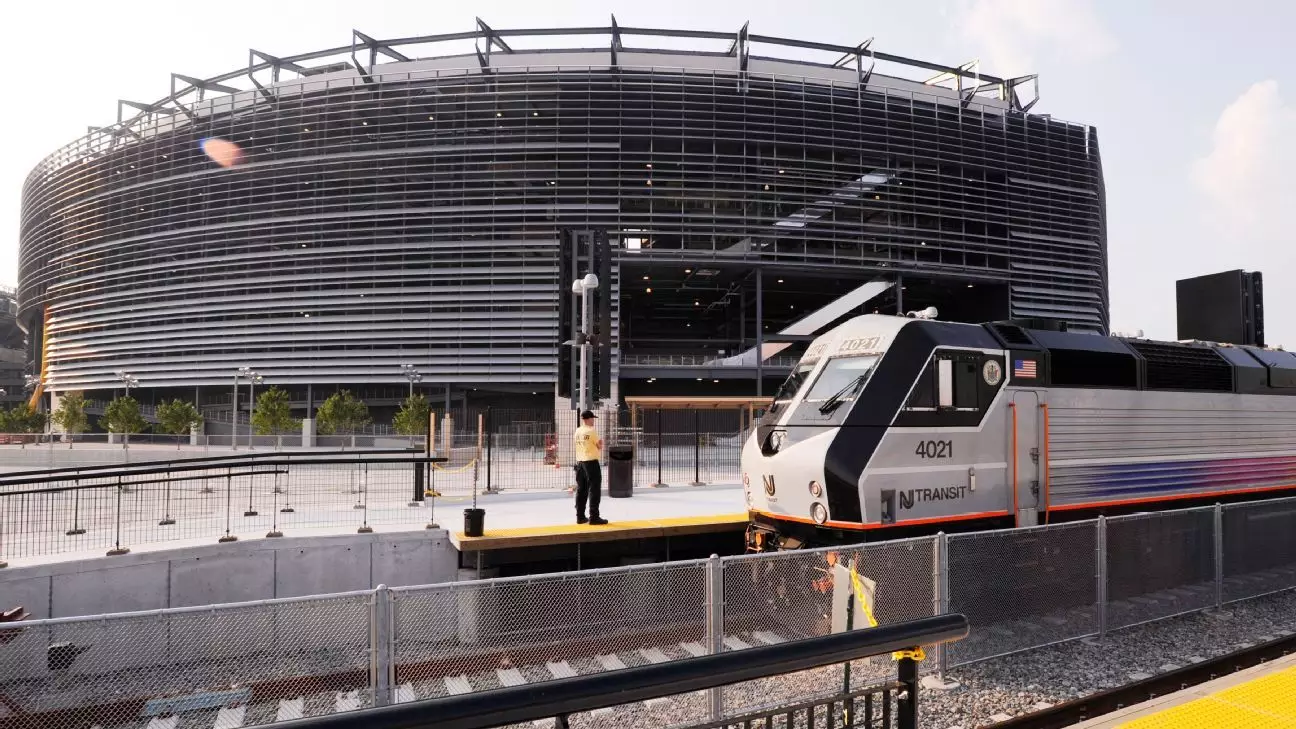As we approach the 2026 FIFA World Cup, the northeastern states of the U.S. are buzzing with excitement and ambition. Boston, New York/New Jersey, and Philadelphia have banded together to present a united front aimed at showcasing their respective merits as a megasite for fans and visitors. With an estimated 6.5 million attendees expected for the tournament, the strategy essentially revolves around leveraging the ease and accessibility of Amtrak services along the densely populated Northeast Corridor. However, despite this promising notion, there lies a substantial hurdle: the current state of Amtrak itself.
The Reality of Amtrak: Services Under Strain
For more than a decade, Amtrak has been embroiled in controversies over service reliability, efficiency, and capacity challenges. Reports project an influx of millions for the World Cup, but experts cast a shadow on this optimism. Jim Mathews, the president and CEO of the Rail Passengers Association, articulates a grim forecast, warning of a potential “crushing” of operational capacity amidst an already overburdened system. Passengers have long lamented issues ranging from overcrowding to significant delays, and the Northeast Corridor, a crucial artery stretching from Boston to Washington, D.C., bears the brunt of these complaints. The rail line is undeniably busy, managing about 2,200 daily trains for approximately 750,000 passengers, but with aging infrastructure—complete with 17 tunnels and over 1,186 bridges, some of which are over a century old—the shortcomings become glaringly obvious.
The rising demand within the Northeast Corridor juxtaposed with increasing service disruptions adds to the thick fog of concern. Amtrak admits to facing reliability challenges, as nearly 10% of its trains are either late or canceled—an unacceptable figure as we near one of the most prestigious events in the sports calendar.
Potential Complications During High-Demand Events
Past summer seasons have demonstrated how precarious Amtrak’s reliability can be, with notable breakdowns linked to equipment malfunctions exacerbated by seasonal heat. The frequency of these disruptions—including knocks on services running in and out of key stations like Penn Station—has raised alarms. Could the stress from hosting the World Cup merely serve as the tipping point for an already fragile transportation system?
Moreover, the challenge extends beyond immediate technical constraints. With visitors arriving not just for matches but also to explore nearby cities like Washington, D.C., and Baltimore, the transportation system is courting disaster without drastic intervention. Tokyo, Beijing, and many European cities manage efficient public transport during global events, setting a high standard against which Amtrak’s performance may be starkly compared.
Promises for Improvement and Ongoing Concerns
Local organizers express optimism that Amtrak will rise to the occasion, citing past experiences in managing transport for large-scale events. Alex Lasry, the CEO of the New York/New Jersey host committee, has presented Amtrak as an essential partner for seamless travel. However, despite the chutzpah displayed by transport authorities, lingering doubts remain, especially given the looming shadow of insufficient infrastructure investment.
Nevertheless, Amtrak has pledged a commitment to enhancing its offerings. Plans include expanding the Acela train fleet and modernizing services to accommodate the heightened demand expected in 2026. Although the promise is notable, reality checks arrive in the form of delayed projects, uncertain funding, and an unresolved leadership crisis at Amtrak—crucial factors that could hinder preemptive measures.
The Broader Implications and Setbacks
Without proactive repairs and upgrades to an aging system, the World Cup may serve as a high-profile example of what can go awry when infrastructure isn’t prioritized. Decades of congressional underfunding have ultimately led to a crisis point where modernizing the rail network has become a matter of national urgency rather than a long-term goal. With other massive events on the horizon—the 2028 Summer Olympics, the Rugby World Cups, and the Winter Olympics—Amtrak must act decisively to establish a more robust framework or risk embarrassment on the world stage.
The scheduled operations for the World Cup will expose not just the challenges of visitor management but also highlight the cultural expectations associated with modern transportation systems. The hope is that investments received through the Infrastructure Investment and Jobs Act will manifest as tangible improvements. Still, the clock is ticking, and many stakeholders feel the pressure of ensuring that the operational plans meet the expectations of millions of event-goers.
Preparing for the Unknown: The Risks Ahead
As the December 5 FIFA draw approaches, uncertainty looms. Countries participating in the World Cup will inevitably affect travel patterns. “Some fans are ready to book their flights at a moment’s notice,” notes travel planner Mike Blankemeyer, while others are stalling their decisions until the draw solidifies. Local movements need to adapt to unpredictability, balancing the needs of event attendees with those of residents.
Ultimately, the challenge lies not only in accommodating an influx of visitors but also in creating a transportation ecosystem that remains the backbone of urban connectivity. As Lasry acknowledges, addressing operational hiccups before they spiral into larger inconveniences for both tourists and locals will be critical to achieving a successful World Cup experience in the Northeast Corridor.

